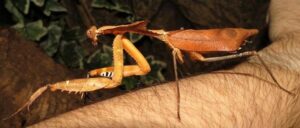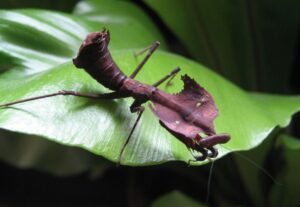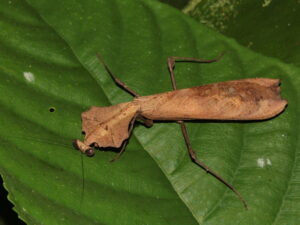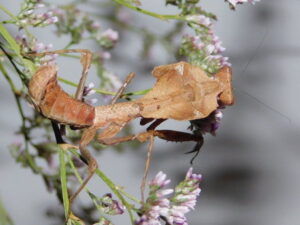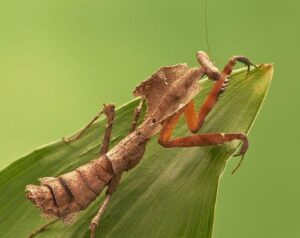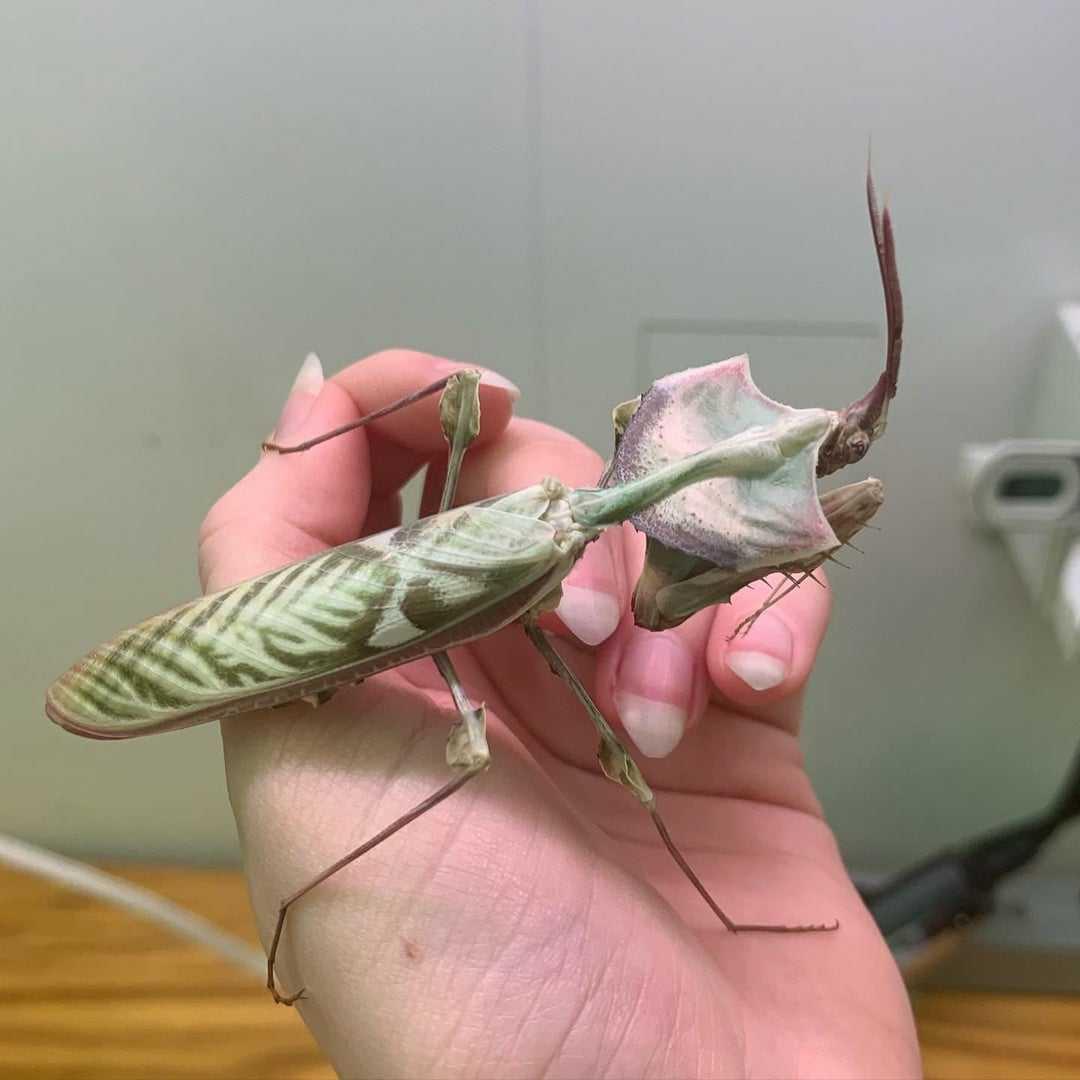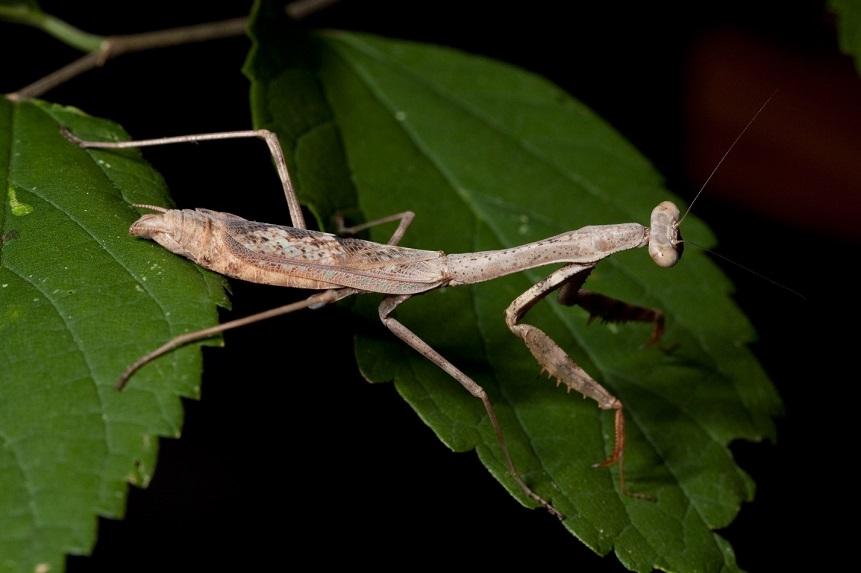Giant Dead Leaf Mantis (Deroplatys desiccata)
Updated on
25/11/2022As its name indicates, the giant dead leaf mantis is a large species of mantid with patterns and colors similar to a dead leaf. Native to Southeast Asia, it is a popular pet worldwide.
Scientific Classification
- Class:Insecta
- Order:Mantodea
- Family:Deroplatyidae
- Genus:Deroplatys
- Species:D. desiccata
Conservation Status
Description
Compared to other mantids sharing the name “dead leaf mantis”, this species is the largest. Males are about 2.5 to 2.8 inches long, while females are slightly larger at 2.9-3.1 inches. Its coloration consists of various shades of brown. The prothorax shields of the females are pointed, while the males are rounded.
Other Common Names: Dead Leaf Mantis
Distribution: Borneo, Indonesia, Malaysia, the Philippines, and Sumatra
Habitat: Scrubland and tropical forests
Do they bite: No
Lifespan: Males: 18 months; Females: 2 years
Predator: Birds
Behavior and Characteristics
Feeding
They have a preference for flying insects.
Defensive
This mantis defends itself with its natural camouflage skills and movements. When approached, it will either sway like a leaf caught in the wind or fall and remain motionless. It will display its black underwings threateningly, which along with the large eyespots, frighten away unsuspecting predators. The lines on its body, combined with its dark coloration, cause predators to mistake it for a dead leaf.
Life Cycle
Males go through eight instars, while females go through one more.
1. Egg Stage
After mating, the females soon lay eggs.
2. Nymph Stage
The nymphs feed on fruit flies, pinhead crickets, and similar small insects.
Pet Care Sheet
The giant dry leaf mantis is a mantid that can be reared easily in captivity.
Enclosure: An average terrarium should be about 12 x 8 x 12 inches or bigger.
Temperature: 26 – 35 ° C; DO NOT let the temperature of the enclosure fall below 22 ° C during the day.
Humidity: Spray regularly with water as the species likes high humidity.
Feeding: Adult mantids are fed crickets, flies, flour worms, moths, and other large insects.
Source
jonathansjungleroadshow.co.uk, 3.bp.blogspot.com, biolib.cz, phuketnaturetours.com, mantiden-zimmer.de, keepingexoticpets.com




